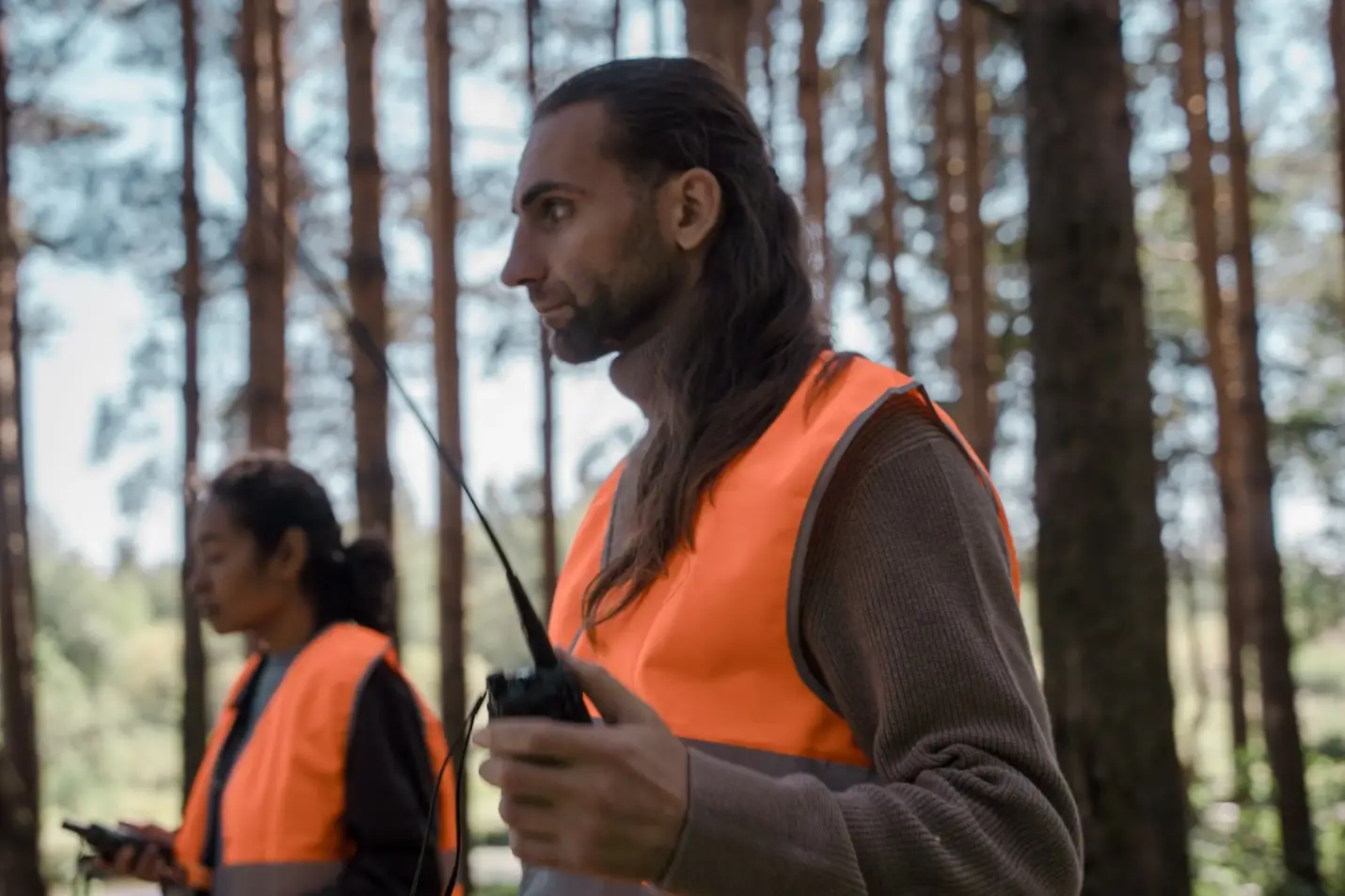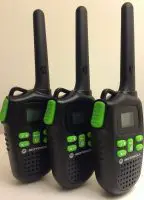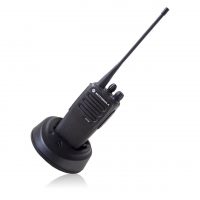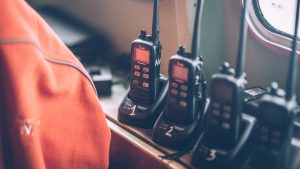When researching the best handheld walkie-talkies for long range, you may have seen some brands advertise a 25 to 40 miles range. However, once you buy them, you find that the walkie- talkie average range is not even close to what was promised.
In this guide, we will help you understand the truth about walkie-talkie ranges, how far walkie-talkies reach, and what you can do to extend their range.
Table of Contents
What is a Walkie-Talkie Average Range?
Long-distance two-way radio ranges can be affected by a number of factors, including outdoor or indoor use, daytime or nighttime use, and even the weather. As it stands, it can often be difficult to predict what the effective range of a walkie-talkie is.
In near-perfect conditions, the best walkie-talkies for long-range applications will give you a range of 20 to 30 miles. In real-world conditions, however, with buildings, trees, and many other obstacles, the average range might be just one to three miles.
How Far Will Walkie-Talkies Reach in Various Scenarios?
Your walkie-talkie will perform in varying ways depending on what type of environment you are in. If it has a straight line of sight without any impediments in between, its signals will reach much further.
The more obstacles in your path, the choppier the signal will become and the shorter the range. At last, there will come a point where the signal is so weak you will not be able to decipher the message. In this case, you will only hear the crackle of the radio or some broken words coming choppily through.
In an urban city-like environment, a walkie-talkie with an average range will reach about 0.5 to 1 mile. This is due to a high number of building materials between you and the recipient. Additionally, radio waves can also be disrupted by electromagnetic waves.
In a high-rise building, you might get signals to about 5 to 10 floors. If you are in a wooded area, the distance might be about 1 mile or slightly more. An open valley will allow the signals to reach for about 3 miles. With a clear line of sight, your signal will go further, typically 3 miles or more, depending on how powerful the walkie-talkie is.
Weather also affects radiowave signal transmissions. Storms, fog, or clouds will interrupt your signals and will reduce the range of the walkie-talkies. So keep this in mind if you decide to take a walk in the mountains.
How Far Do the Best Walkie-Talkies for Long-Range Applications Reach?
The maximum length for a walkie-talkie is around 5 miles, but there are some powerful designs that can reach more than 30 miles. However, again, this range depends on your surroundings.
The higher the wattage of the two-way radio, the greater will be the range.
Typically, police radios operate on a very high frequency at around 700/800 Mhz UHF band. This gives them quite a long range, even in densely populated urban areas. In addition, walkie-talkies with VHF (with signals between 136 to 174MHz) work very well in outdoor environments and give you a little bit longer range for the same power output than UHF radios with 400 470 MHz range in miles.
How Can You Extend Your Walkie-Talkie Average Range?
If you want to extend the range on your walkie-talkie, there are several factors you can take into account. Let’s take a look at some of them.
Improve Signal Strength
It is important to buy a good-quality walkie-talkie since many come with built-in features that improve performance. One of the most important features is signal strength, which is measured in watts. Most walkie-talkies have adjustable signal strengths, which can be set from low to high by selecting a wattage between 0.5 to 5.
The higher the wattage, the better the signal and the longer the range. Radios with 5 watts signal strength can carry your message up to 10 miles.
If you experience significant noise and disruption during communication, you can switch to a higher signal setting or wattage. This can increase the range of the walkie-talkie and improve audio quality. Bear in mind, however, that this can also result in shorter battery life, more electromagnetic radiation, and other negative effects.
Optimize Battery Use
Battery strength also plays a role in how far your message can be communicated through a walkie-talkie. Make sure to check your battery charge and energy settings before using your walkie-talkie.
If you are using higher wattage, it will carry your message further at the expense of your battery charge. Low-power batteries, on the other hand, will reduce your signal strength, which means your message may only be delivered over a short distance. In addition, low-power batteries will drain faster and reduce the length of time you can use your device.
If you use rechargeable batteries, you also need to take into account regular wear and tear as well. Batteries that have been put to repeated use will lose strength over time and discharge more quickly.
To make sure your batteries perform at an optimal level, consider using a battery tester.
Choose an Open Place
One very crucial factor that impacts your walkie-talkie average range is the presence of obstructions in the path of the signal. It also matters how dense the obstacles are and what material they are made of.
Obstacles matter when it comes to the distance signals can travel, as radiowaves need to obtain a line of sight between two communication points. If there are many obstacles in the line of sight, this will interrupt the signal and reduce its range.

Obstructions include buildings, vehicles, billboards, trees, and more. Radiowaves also cannot penetrate metal or hills. This is the reason why your walkie-talkie average range is much shorter in an urban city than in an open valley or atop a mountain.
To extend your range, it is a good idea to go to open and elevated ground. The curvature of the Earth has a dramatic effect on your signal strength. The curvature is 1 foot for every 1.5 km of distance, which means even getting a few feet higher will result in a noticeable increase in your range. Therefore, the higher you climb up, the higher will be the range of your walkie-talkie.
Check the Antenna
The receiving sensitivity of your radio can have a huge effect on your walkie-talkie average range. Walkie-talkies that have short antennas may suffer from a 30 percent lesser signal range than those with longer whip antennas. You can increase the range of the radiowaves by raising the antenna. As a result, You will be minimizing obstacles and raising the line of sight between the communication points.
The best handheld walkie-talkies for long-range applications come with whip antennas, which can improve your range. Furthermore, it has a better capacity to receive weak signals.
To boost your range further, it helps to position your walkie-talkie in an elevated area.
Use a Signal Repeater
If your walkie-talkie has a built-in antenna that cannot be extended, you can leverage signal repeaters or boosters to increase your range.
A signal repeater receives your signal and re-transmits it with increased power, thereby increasing your range of communication. To use a repeater, you will need to configure your walkie-talkie to work with the repeater.
Most signal repeaters transmit messages in real-time. It typically takes a repeater 50 milliseconds to process your signal and send it out again.
You can also use “store and forward” signal repeaters that process and store your message and resend it at a later time.
Consider the Weather
You also need to take the weather into account when using a walkie-talkie. Clear blue skies are an ideal condition and ensure a stronger signal with a maximum range. On the other hand, a thunderstorm, fog, or high winds can have a negative effect on the walkie-talkie average range.
You do not have any control over the weather, but it is important to understand this factor for times when your walkie-talkie signals seem to appear weaker than normal.
So How Far Can You Expect Your Walkie-Talkie Range To Be?
If you want to understand your walkie-talkie average range, looking at advertisements is not a good way to find them out. Typically, ideal conditions for the maximum range of signals can almost never be found in real life unless you are high up in the mountains.
Depending on how powerful your walkie-talkie is, you can expect it to have a range of around 1 to 5 miles. Keep this in mind when you are out hiking next time.
If you want to learn about the best range walkie-talkies, visit us at Walkie Talkie Central. We can help you find the best guides so that you can buy the right walkie-talkie for your needs and get real reviews from real customers for the best walkie-talkies for long range and short range applications.





